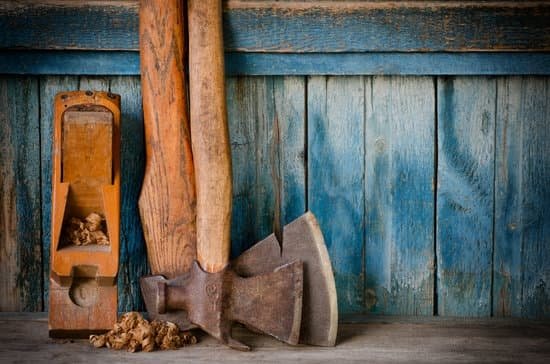Band saws are an essential tool for woodworking, offering precision cutting and shaping, versatility in cutting different materials, and efficiency in woodworking projects. Whether you are a seasoned professional or a hobbyist woodworker, understanding the role of band saws is crucial to achieving desirable results in your projects.
In this article, we will explore the importance of band saws in woodworking, the different types available, the benefits of using them, key features to consider when purchasing one, tips and techniques for using a band saw, as well as maintenance and care tips to ensure longevity.
Additionally, we will showcase real-life examples of woodworking projects that heavily rely on band saws for precision and detail. By the end of this article, you will have a comprehensive understanding of why band saws are considered essential tools for any woodworker.
Types of Band Saws
There are several types of band saws available for woodworking, each with its own set of pros and cons. It’s important to understand the differences between these types in order to choose the right one for your specific woodworking needs. Here are some of the most common types of band saws used in woodworking:
- Benchtop Band Saws: These smaller, compact band saws are designed to be mounted on a workbench or stand. They are ideal for small-scale woodworking projects and hobbyists who have limited space in their workshops. However, they may lack the power and cutting capacity needed for larger projects.
- Floor-Standing Band Saws: Larger and more powerful than benchtop models, floor-standing band saws are suitable for professional woodworkers and larger-scale projects. They offer more cutting capacity and stability, making them versatile for a wide range of woodworking applications.
- Portable Band Saws: These handheld or portable band saws are designed for cutting curves, irregular shapes, and straight lines in wood. They are lightweight and easy to maneuver, making them perfect for on-site or remote woodworking tasks.
Each type of band saw has its own advantages and disadvantages, so it’s important to consider factors such as the size of your projects, available space in your workshop, and portability requirements when choosing the right band saw for your woodworking needs.
When selecting a band saw for woodworking, it’s essential to consider factors such as cutting capacity, motor power, blade size, and additional features like dust collection systems and safety guards. Ultimately, the right band saw will depend on the specific demands of your woodworking projects.
Benefits of Using Band Saws in Woodworking
Band saws are incredibly essential for woodworking due to their numerous benefits and advantages. One of the key benefits of using band saws in woodworking is their precision cutting and shaping capabilities. Band saws allow woodworkers to make intricate curved cuts and detailed designs with ease, making them a versatile tool for various woodworking projects. Whether it’s creating furniture, decorative items, or even DIY home improvement projects, band saws provide the precision needed for professional-looking results.
In addition to precision cutting, band saws also offer versatility in cutting different materials. While primarily used for wood, band saws can also cut through plastic, metal, and other materials with the right blade. This makes them a valuable tool for woodworkers who may need to work with multiple materials for their projects.
The efficiency and time-saving aspect of using band saws in woodworking cannot be overlooked either. With their fast cutting speed and the ability to perform intricate cuts quickly, band saws help woodworkers save time and complete projects more efficiently.
Moreover, the versatility in blade options allows woodworkers to achieve different finishes on their projects without needing multiple tools. This not only saves space in a workshop but also reduces the need for additional equipment purchases. Overall, the benefits of using band saws in woodworking are clear – they offer precision cutting, versatile material compatibility and save time in project completion.
| Benefits of Band Saws | Importance |
|---|---|
| Precision cutting | Essential for creating intricate designs |
| Versatility in material cutting | Allows woodworkers to work with various materials |
| Efficiency and time-saving | Helps complete projects more quickly |
Key Features to Look for in a Band Saw
When choosing a band saw for woodworking, there are several key features to consider that will ensure you get the most out of this essential tool. Understanding what to look for in a band saw can make a significant difference in the quality of your woodworking projects and overall user experience.
Power and Blade Size
One of the most important features to consider when selecting a band saw is the power and blade size. The power of the motor will determine the cutting capacity of the band saw, making it crucial for efficiently handling different types of wood and other materials. Additionally, the size and type of blade will impact the precision and flexibility of cuts, so it’s essential to choose a band saw with adjustable blade guides for added versatility.
Table Size and Stability
The size and stability of the table on a band saw are also critical factors to consider. A larger table provides more support when working with larger pieces of wood, while stability ensures accuracy during cutting. Look for a band saw with an adjustable table that can be tilted or raised for angled cuts, as well as sturdy construction that minimizes vibration for smoother operation.
Blade Speed and Tension Control
Blade speed and tension control are crucial features that directly impact the performance and efficiency of a band saw. Adjustable blade speed allows for greater control over different cutting tasks, while tension control ensures optimal blade performance and longevity. Consider investing in a band saw with easy-to-adjust speed settings and quick tension release mechanisms for enhanced convenience during operation.
Considering these key features when purchasing a band saw for woodworking will ultimately determine its effectiveness in various projects. By prioritizing power, stability, blade control, and other important factors, woodworkers can confidently select the right band saw to meet their specific needs and achieve exceptional results.
Overall, understanding
Tips and Techniques for Using a Band Saw
Band saws are an essential tool for any woodworker, offering precision cutting and shaping capabilities that are unmatched by other woodworking tools. When it comes to using a band saw, there are some tips and techniques that can help woodworkers maximize the potential of this versatile tool.
First and foremost, safety should always be a top priority when using a band saw. It’s important to wear appropriate safety gear, such as goggles and ear protection, and to keep hands and fingers away from the blade at all times. Additionally, it’s crucial to ensure that the band saw is properly set up and adjusted before use to avoid any accidents or injuries.
In terms of cutting techniques, one of the key benefits of using a band saw is its ability to make curved cuts with ease. By slowly feeding the wood through the blade while guiding it along the desired curve, woodworkers can achieve intricate shapes and designs that would be difficult to accomplish with other tools. It’s also important to pay attention to the blade tension and speed settings in order to achieve clean and precise cuts.
Another important technique when using a band saw is proper blade selection and maintenance. Different blades are suited for different types of cuts and materials, so knowing which blade to use for each project is crucial. Additionally, regularly monitoring the condition of the blade and keeping it sharp will ensure high-quality results in woodworking projects.
By following these tips and techniques for using a band saw in woodworking projects, woodworkers can unleash the full potential of this essential tool and create impressive pieces with precision and detail.
Maintenance and Care for Band Saws
Band saws are essential tools for any woodworking enthusiast, providing precision cutting and shaping, versatility in cutting different materials, and efficiency in completing various woodworking projects. However, like any other power tool, band saws need proper maintenance and care to ensure their longevity and optimal performance.
Proper Maintenance
Regular maintenance of your band saw is crucial to keep it running smoothly. This includes regular cleaning to remove sawdust and debris that can build up over time, causing the machine to work less efficiently. It is also important to regularly lubricate the moving parts of the band saw to reduce friction and prevent premature wear and tear.
Blade Maintenance
The blade of a band saw is one of its most crucial components, as it is responsible for the actual cutting. Regularly inspect the blade for any signs of wear or damage, such as dullness or missing teeth. It’s important to replace the blade when necessary to ensure clean and precise cuts in your woodworking projects.
Common Troubleshooting
Inevitably, you may encounter some issues with your band saw that require troubleshooting. These can include issues with blade tracking, tensioning problems, or motor malfunctions. Understanding how to troubleshoot these common problems can help keep your band saw in good working condition.
Taking the time to properly maintain and care for your band saw will not only extend its lifespan but also ensure that it continues to deliver high-quality results in all your woodworking endeavors. Regular maintenance reduces the risk of unexpected breakdowns during critical project stages and keeps the tool running smoothly. By following these tips for maintaining and caring for your band saw, you can continue crafting beautiful woodwork without interruption.
Real-Life Examples of Band Saw Woodworking Projects
Band saws are an essential tool for any woodworker, offering precision cutting and shaping capabilities that are unmatched by other woodworking tools. This versatile piece of equipment allows woodworkers to create intricate designs and make curved cuts with ease, making it a must-have for any woodworking project. Whether you are a beginner or an experienced woodworker, understanding the potential of band saws and their applications can greatly enhance your craft.
Below are some real-life examples of woodworking projects that heavily rely on band saws for precision and detail:
– Custom Furniture: Many custom furniture pieces require curved or intricate cuts that can only be achieved with a band saw. From chair legs to table edges, the band saw is essential in creating unique and eye-catching furniture designs.
– Wooden Sculptures: Artists and woodworkers alike use band saws to craft stunning wooden sculptures. The ability to make precise, curved cuts allows for the creation of lifelike figures and intricate shapes that would be nearly impossible to achieve with traditional cutting tools.
– Veneer Cutting: Veneer cutting requires precision and finesse, making it an ideal application for the band saw. Woodworkers can create thin, delicate veneers for decorative purposes or to add detailing to larger woodworking projects.
These real-life examples showcase just how essential band saws are for woodworking projects. The versatility and precision offered by this tool open up a world of possibilities for woodworkers, allowing them to bring their creative visions to life with ease. As you explore different woodworking projects, consider how incorporating a band saw can take your craftsmanship to the next level.
Conclusion
In conclusion, band saws are undeniably essential tools for woodworking. From their precision cutting and shaping abilities to their versatility in handling different materials, band saws play a crucial role in woodworking projects of all sizes. Whether it’s crafting intricate details or making long straight cuts, the efficiency and time-saving benefits of using a band saw cannot be overstated.
When considering the types of band saws available for woodworking, each comes with its own set of pros and cons. It is important for woodworkers to carefully assess their specific needs and choose the right type of band saw that will best suit their projects. Additionally, paying attention to key features such as blade size, motor power, and ease of adjustment is crucial when purchasing a band saw.
Furthermore, proper maintenance and care for band saws are essential in ensuring their longevity and consistent performance. By adhering to safety measures when using a band saw and implementing cutting techniques as well as best practices, woodworkers can maximize the potential of this indispensable tool in their craft. In essence, the importance of band saws in woodworking cannot be overstated – they are indispensable tools that enable woodworkers to bring their creations to life with precision and creativity.
Frequently Asked Questions
Do I Need a Band Saw for Woodworking?
A band saw is a versatile tool for woodworking, allowing for curved and irregular cuts that may be difficult with other saws. It can also be used for resawing thick lumber into thinner pieces.
Is a Bandsaw Worth Having?
Whether a band saw is worth having depends on the specific needs and projects of the woodworker. For those who frequently work with curved or irregular cuts, a band saw can be highly beneficial. However, for those who primarily work with straight cuts, it may not be essential.
Do I Need a Table Saw if I Have a Band Saw?
While a band saw can handle many cutting tasks, a table saw also offers unique capabilities for woodworking. A table saw is best suited for precise and straight cuts, especially when working with larger pieces of wood or sheet goods. Both tools can complement each other in a well-equipped workshop.

Hi everyone! I’m a woodworker and blogger, and this is my woodworking blog. In my blog, I share tips and tricks for woodworkers of all skill levels, as well as project ideas that you can try yourself.





